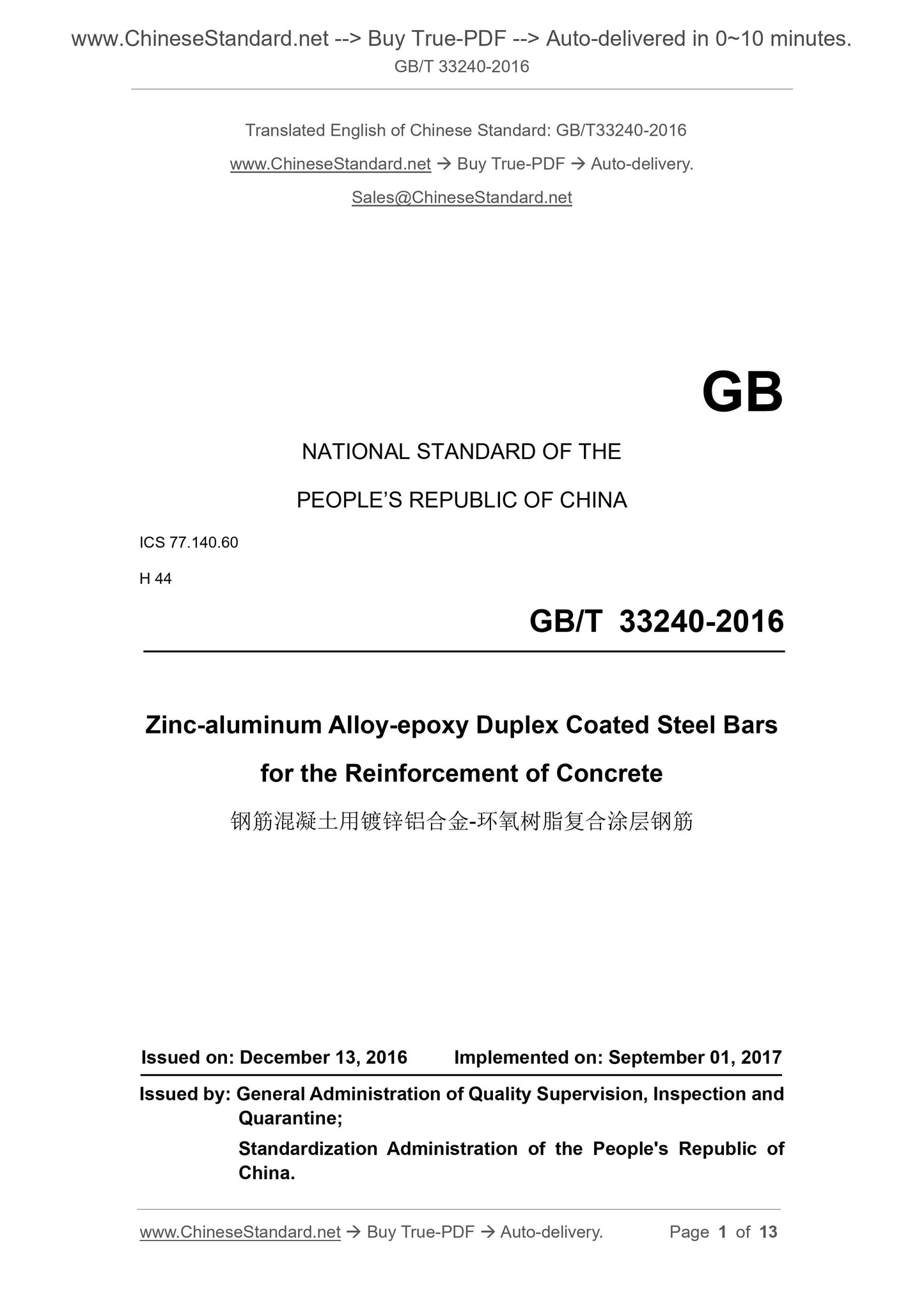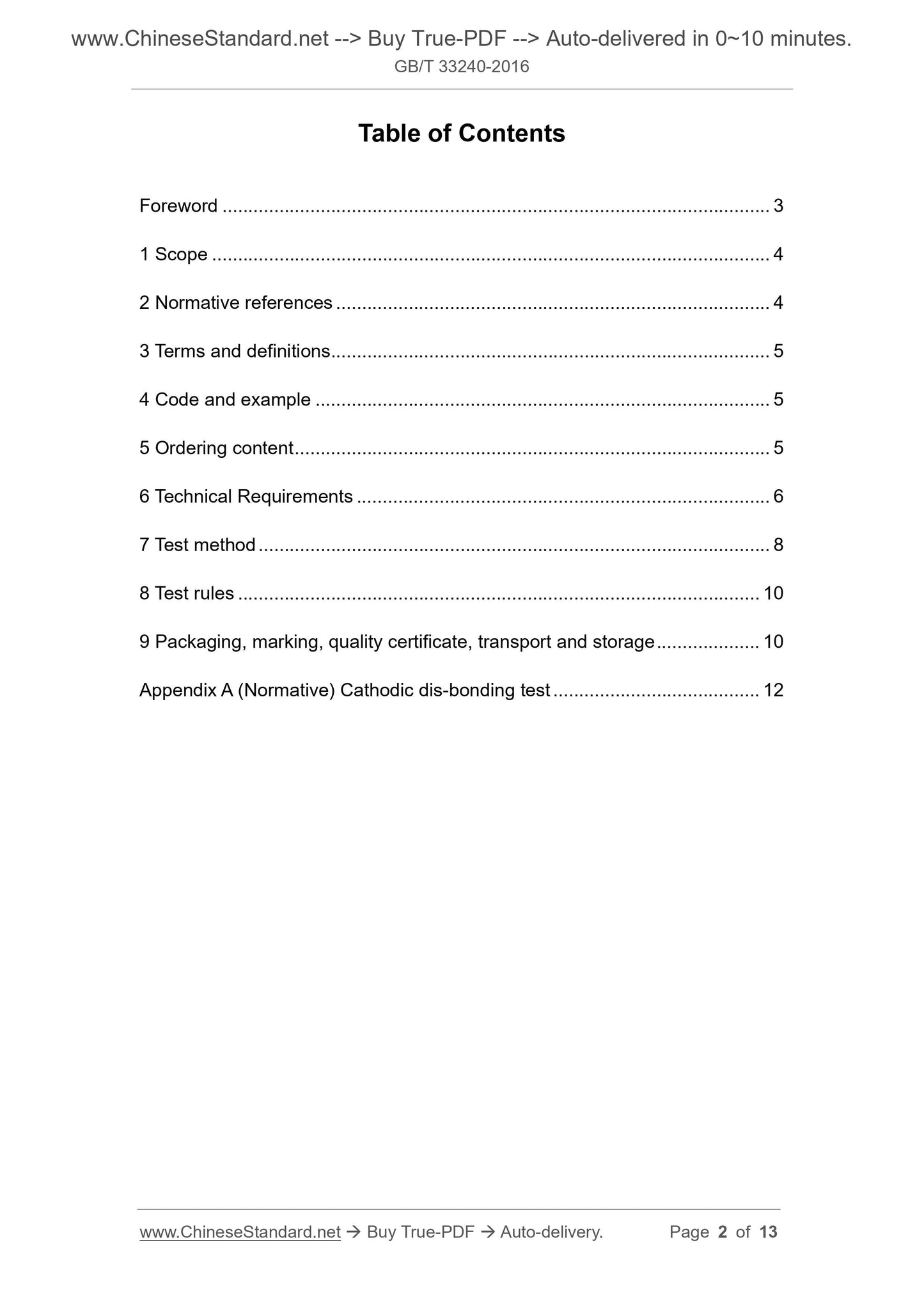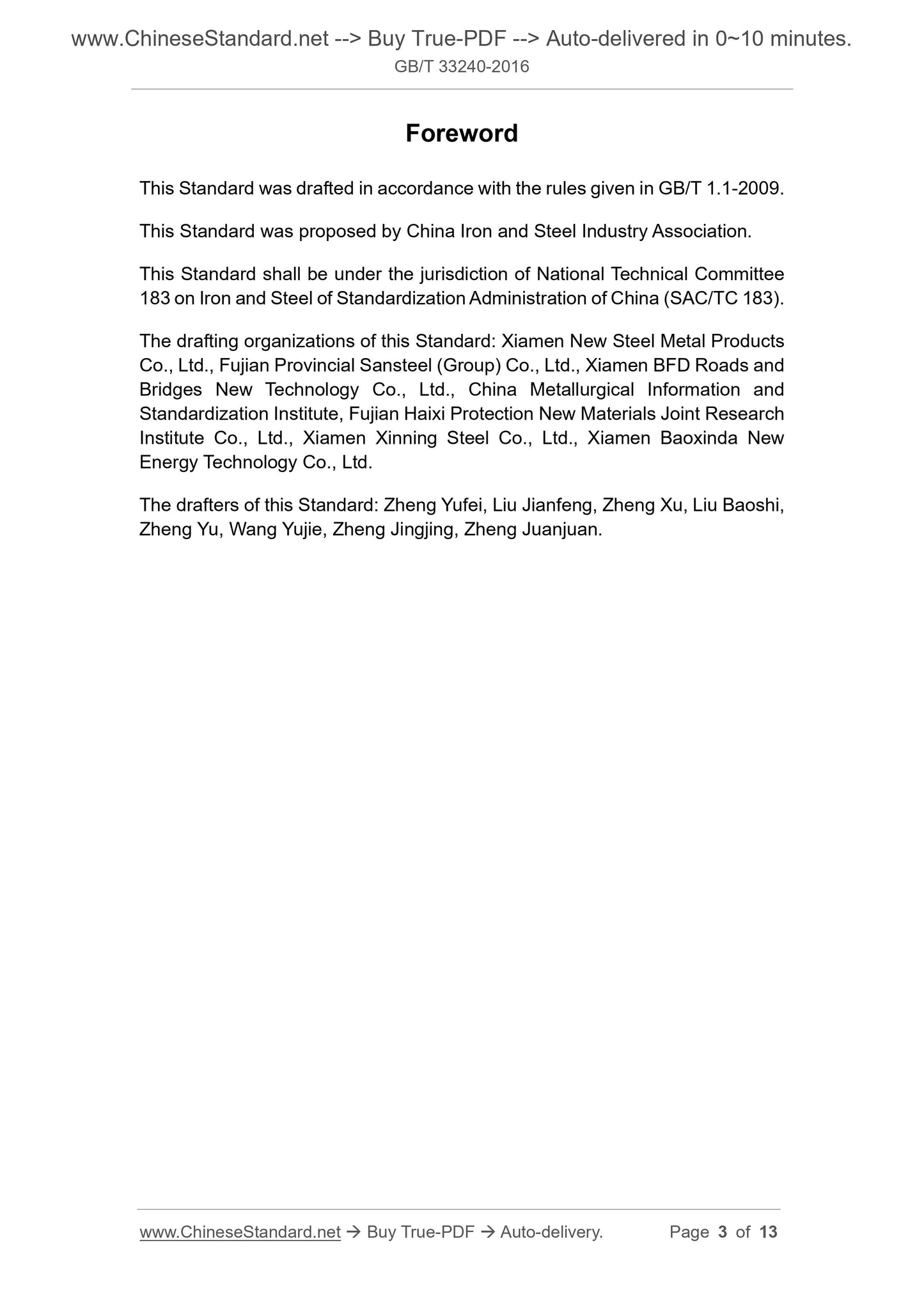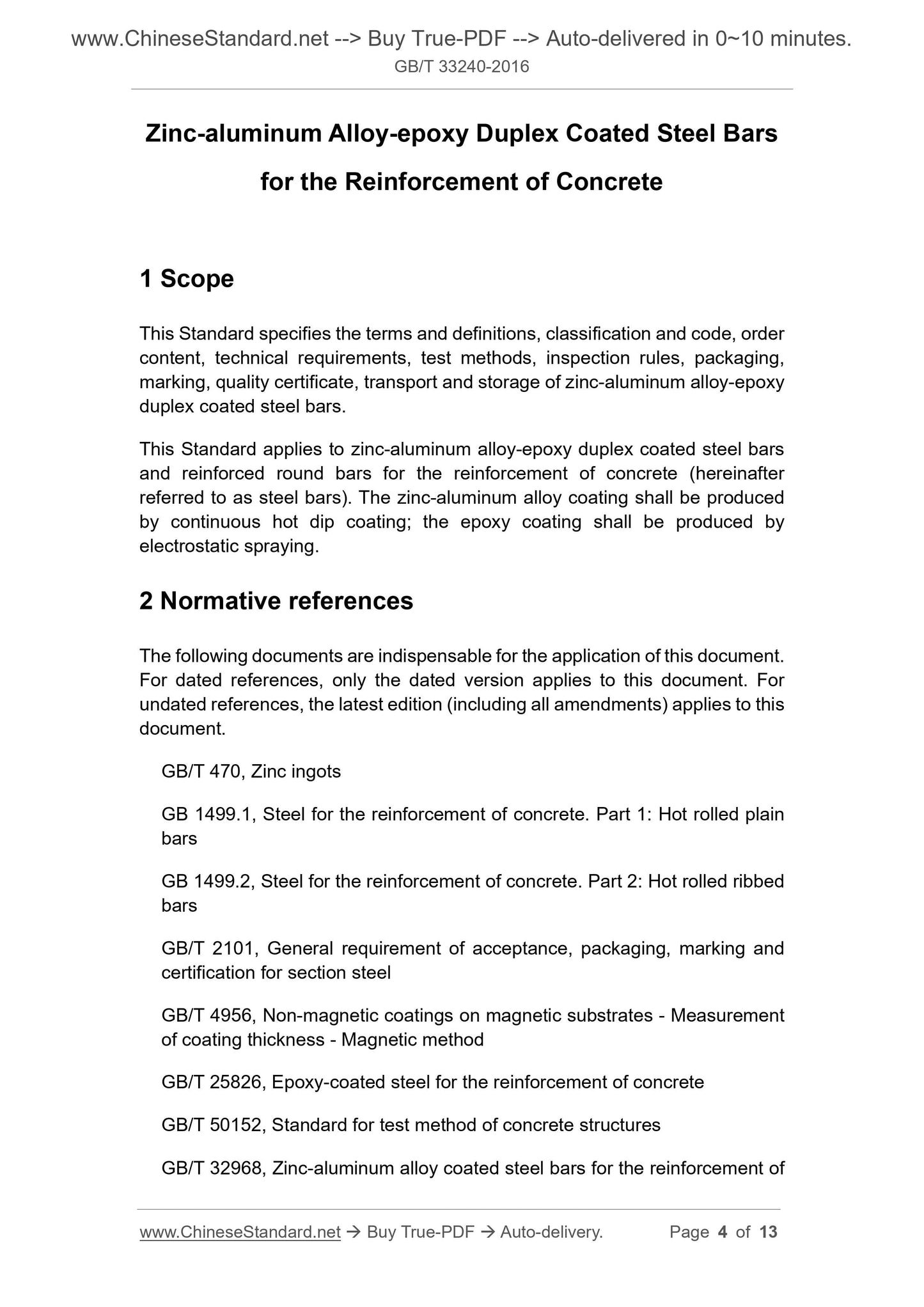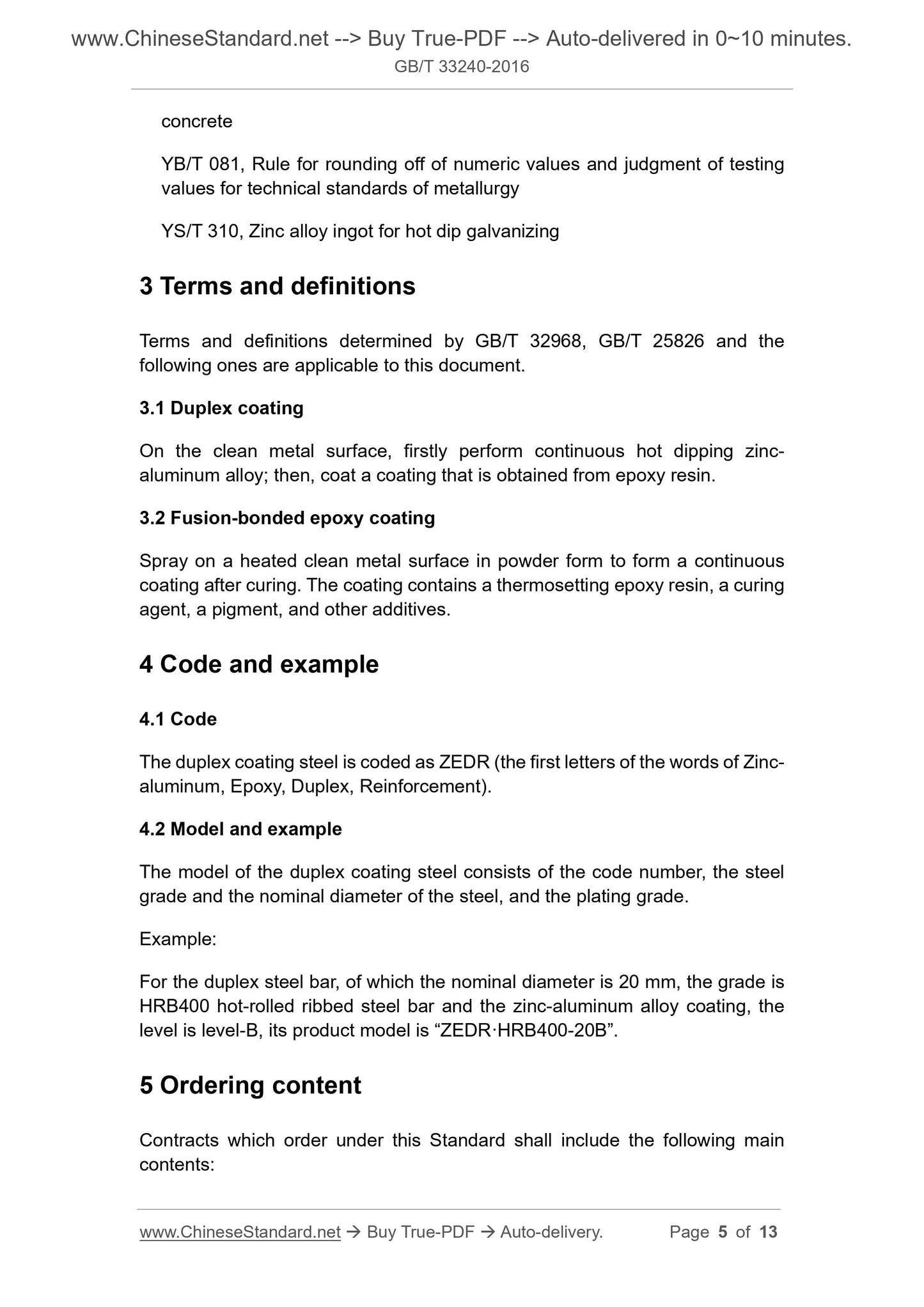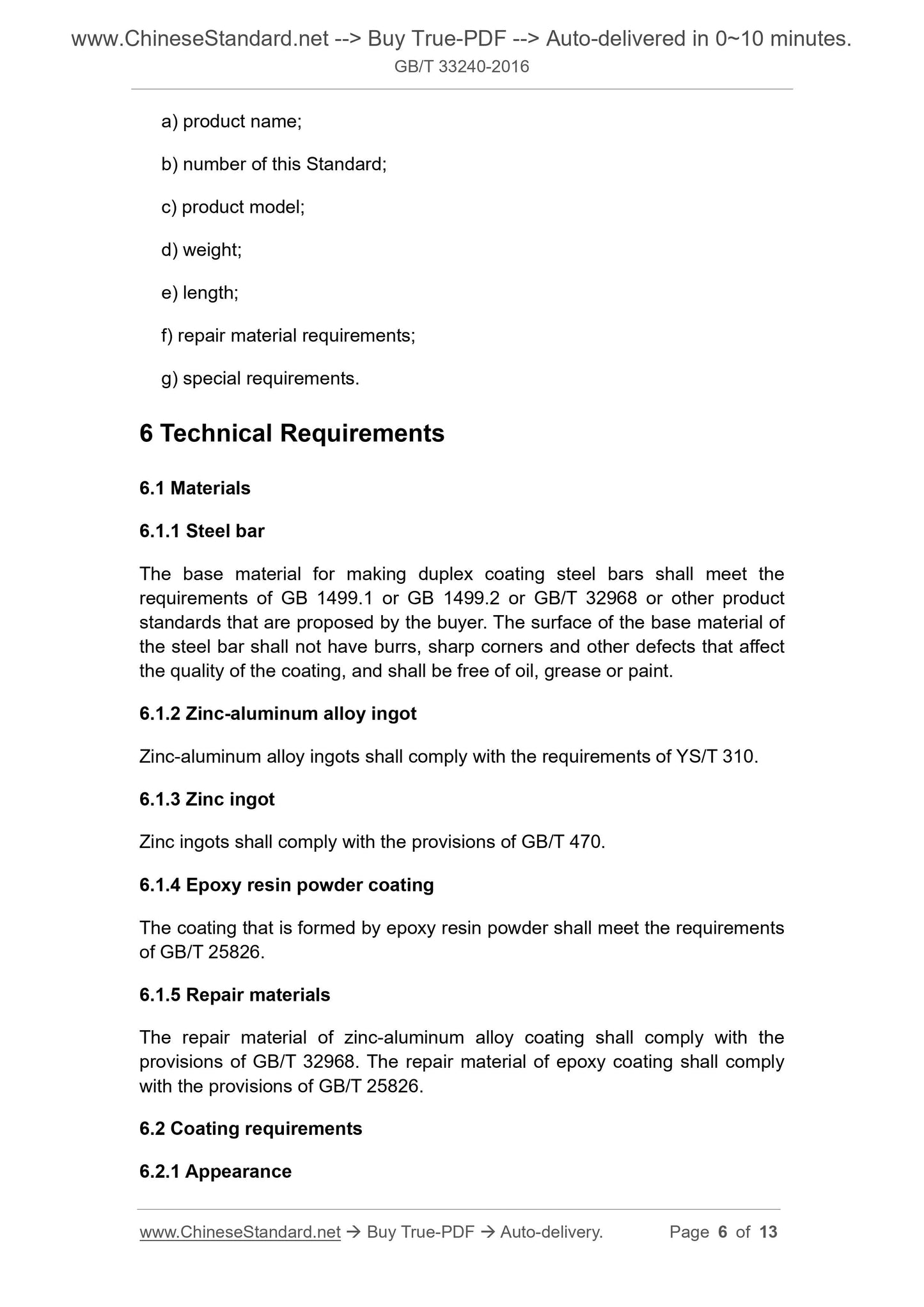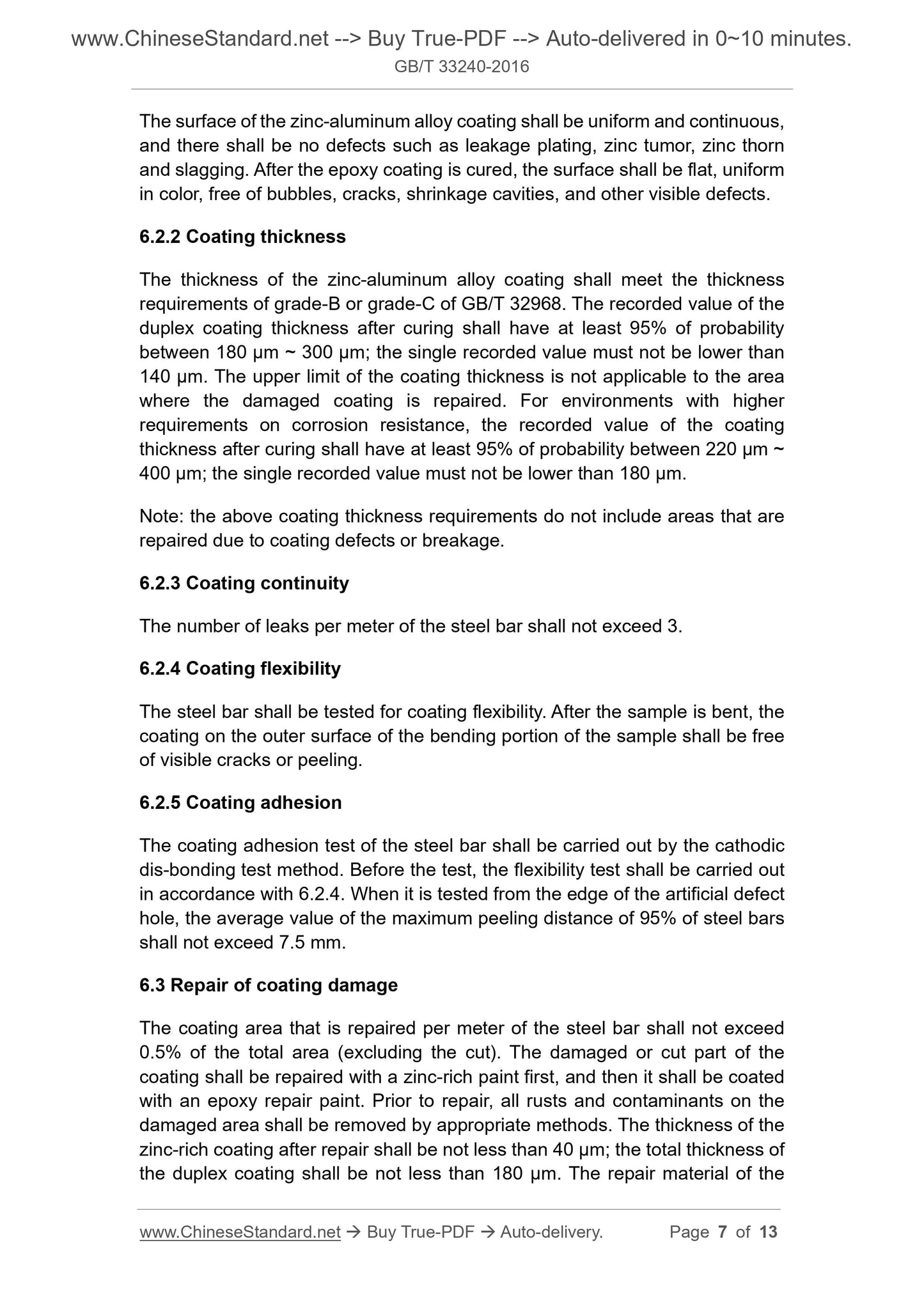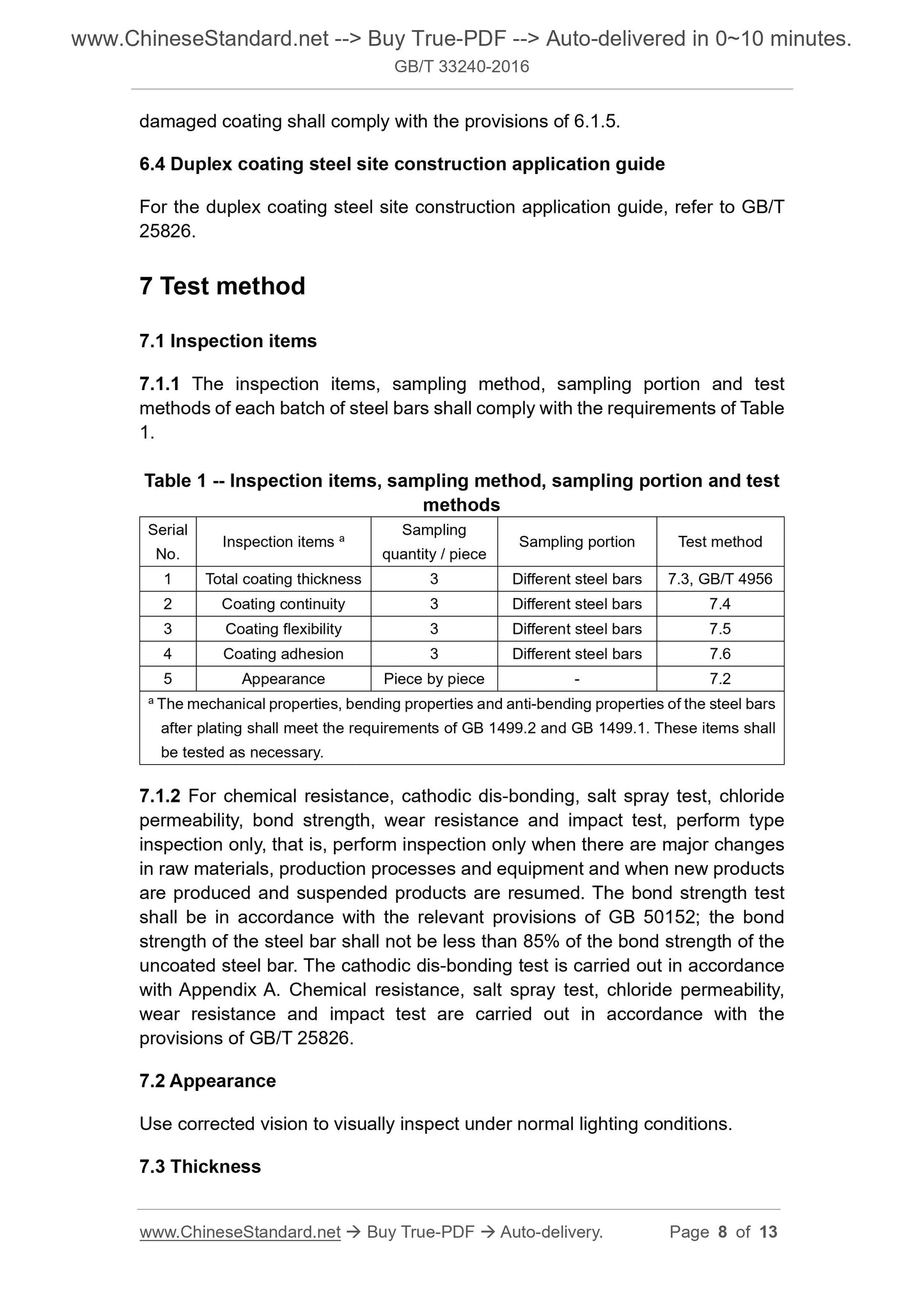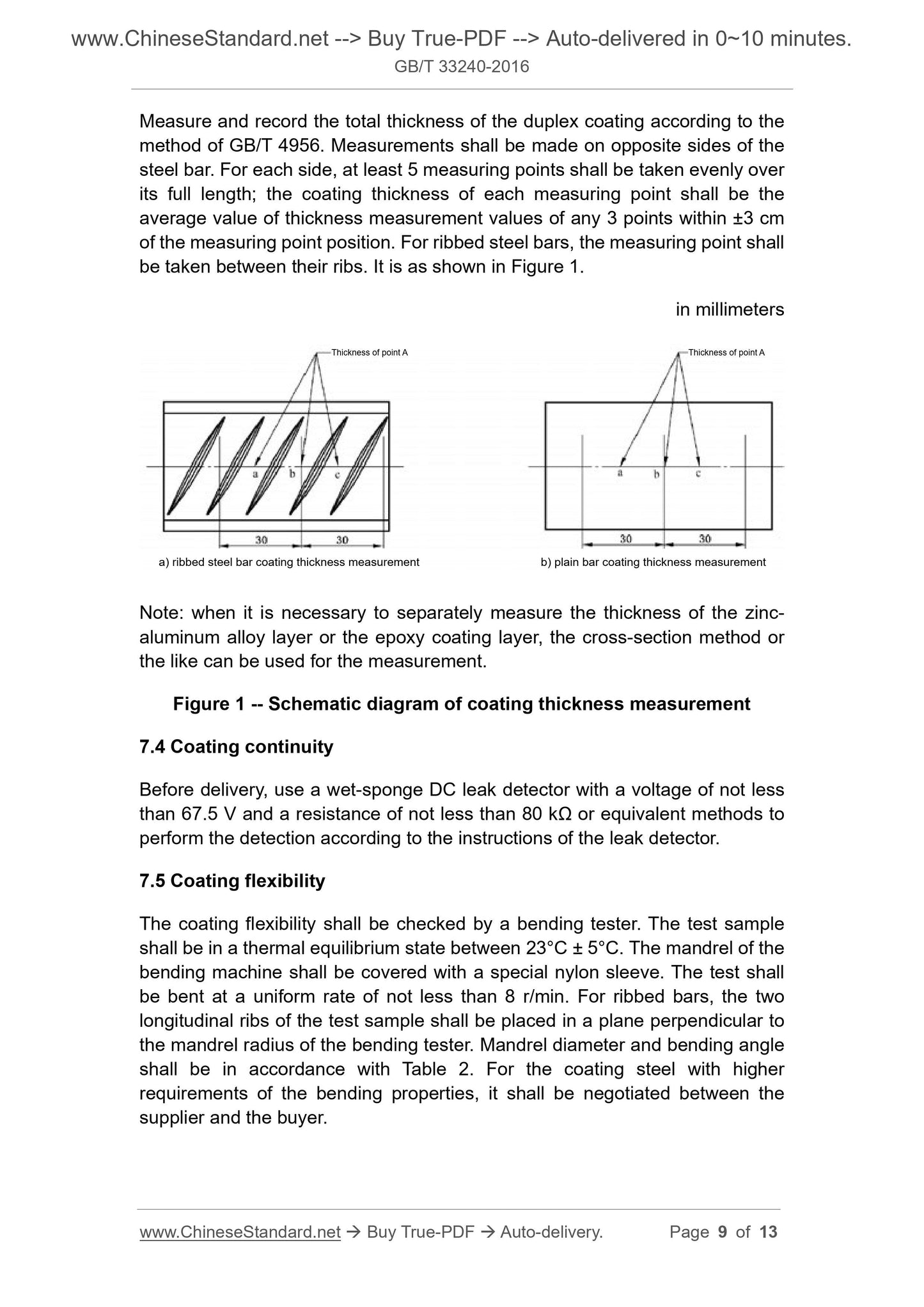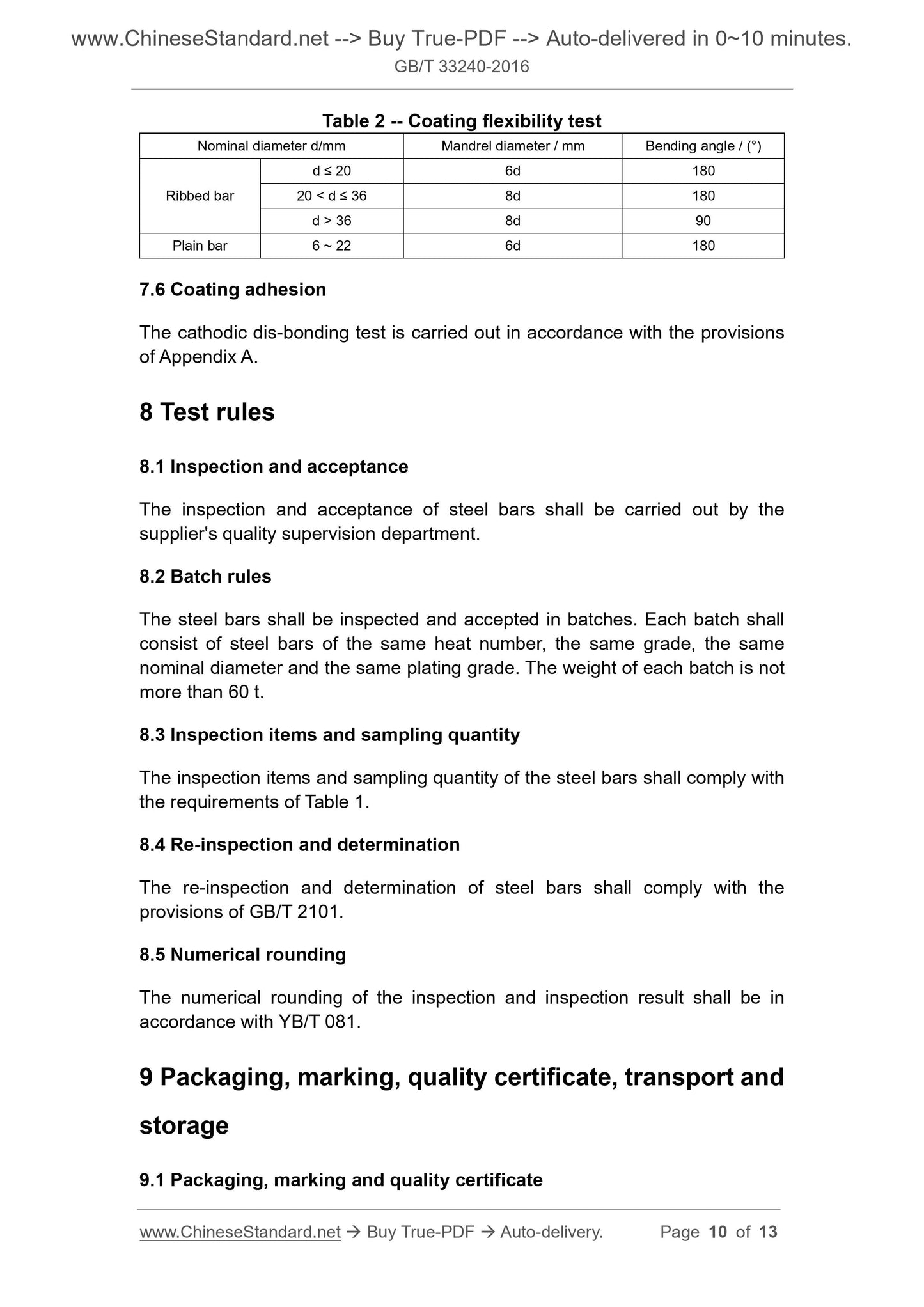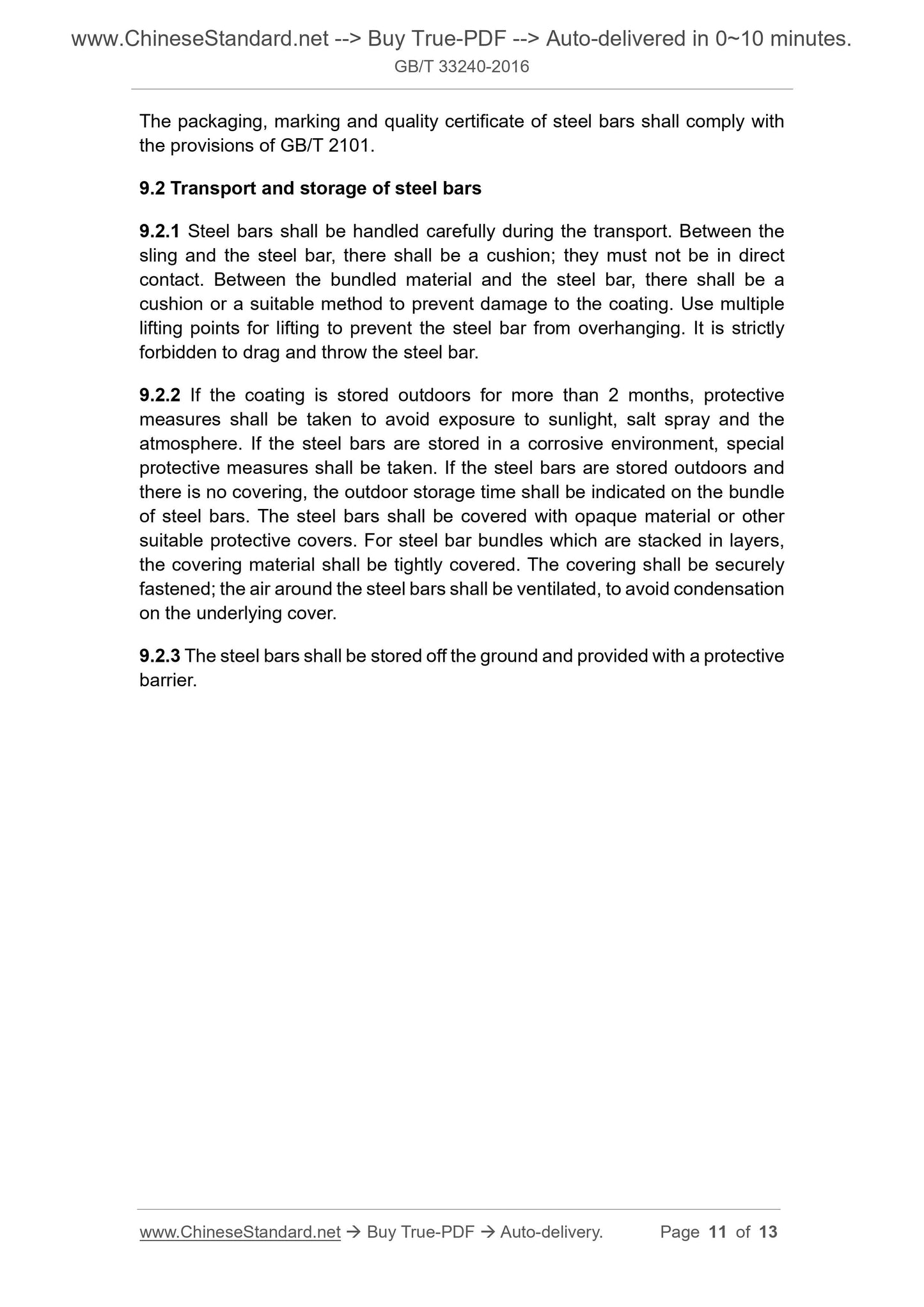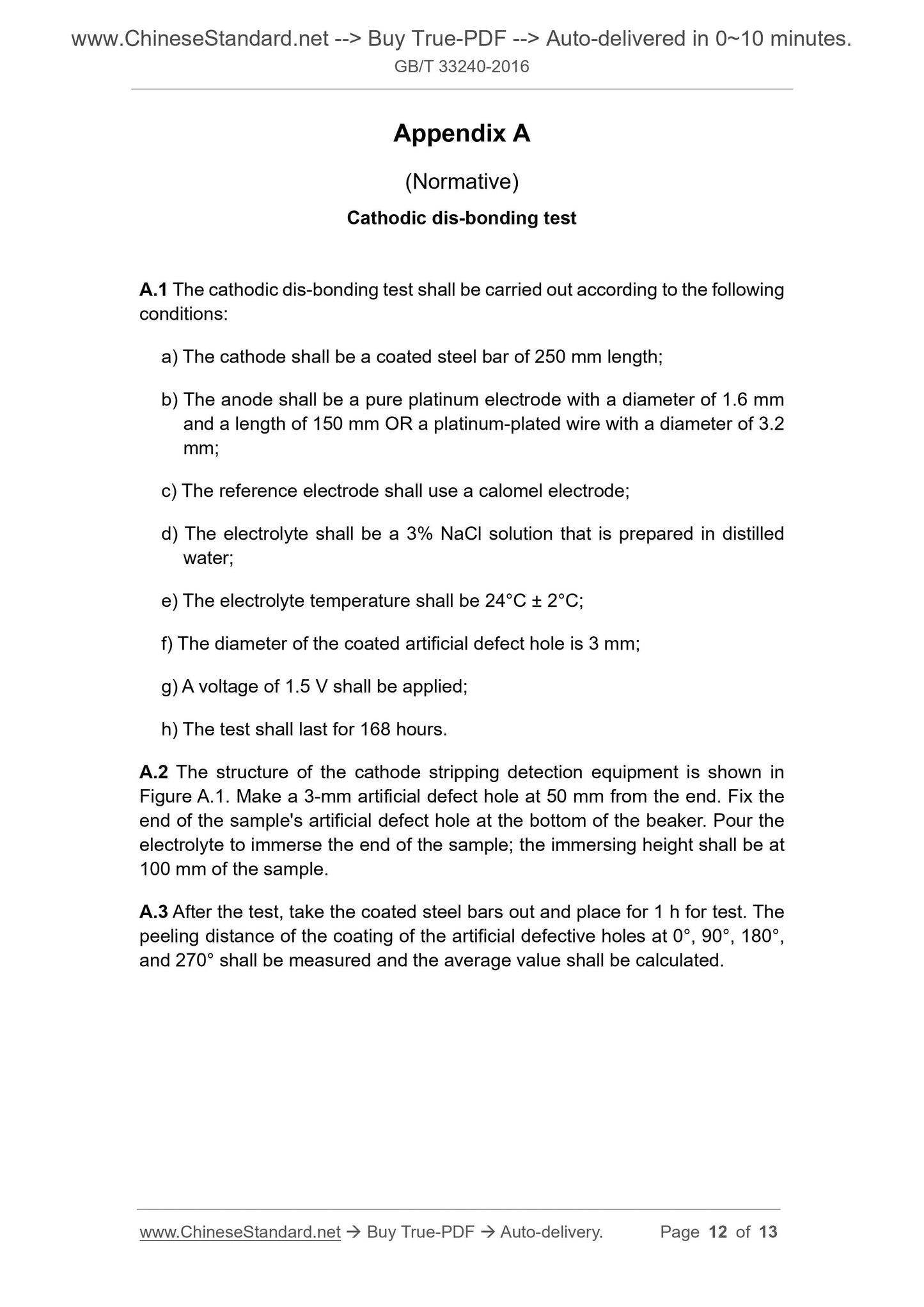1
/
of
12
www.ChineseStandard.us -- Field Test Asia Pte. Ltd.
GB/T 33240-2016 English PDF (GB/T33240-2016)
GB/T 33240-2016 English PDF (GB/T33240-2016)
Regular price
$150.00
Regular price
Sale price
$150.00
Unit price
/
per
Shipping calculated at checkout.
Couldn't load pickup availability
GB/T 33240-2016: Zinc-aluminum Alloy-epoxy Duplex Coated Steel Bars for the Reinforcement of Concrete
Delivery: 9 seconds. Download (and Email) true-PDF + Invoice.Get Quotation: Click GB/T 33240-2016 (Self-service in 1-minute)
Newer / historical versions: GB/T 33240-2016
Preview True-PDF
Scope
This Standard specifies the terms and definitions, classification and code, ordercontent, technical requirements, test methods, inspection rules, packaging,
marking, quality certificate, transport and storage of zinc-aluminum alloy-epoxy
duplex coated steel bars.
This Standard applies to zinc-aluminum alloy-epoxy duplex coated steel bars
and reinforced round bars for the reinforcement of concrete (hereinafter
referred to as steel bars). The zinc-aluminum alloy coating shall be produced
by continuous hot dip coating; the epoxy coating shall be produced by
electrostatic spraying.
Basic Data
| Standard ID | GB/T 33240-2016 (GB/T33240-2016) |
| Description (Translated English) | Zinc-aluminum Alloy-epoxy Duplex Coated Steel Bars for the Reinforcement of Concrete |
| Sector / Industry | National Standard (Recommended) |
| Classification of Chinese Standard | H44 |
| Classification of International Standard | 77.140.60 |
| Word Count Estimation | 10,190 |
| Date of Issue | 2016-12-13 |
| Date of Implementation | 2017-09-01 |
| Regulation (derived from) | National Standard Notice No.18016 of 2016 |
| Issuing agency(ies) | General Administration of Quality Supervision, Inspection and Quarantine of the People's Republic of China, Standardization Administration of the People's Republic of China |
Share
